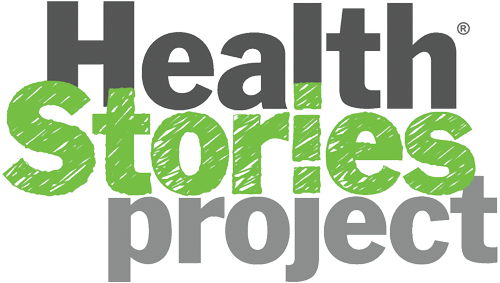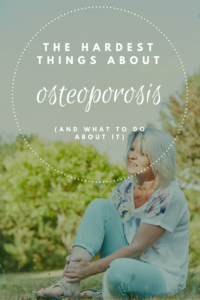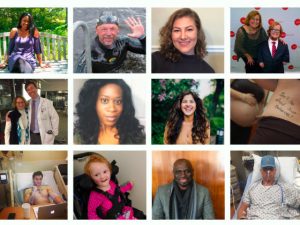We deliver new health stories each week! –> Get stories by email
Osteoporosis is a disease that happens when the body loses too much bone mass, can’t produce enough new bone tissue, or sometimes both of these factors. The bones of people with osteoporosis become weak and are more likely to break, which means that injuries that may have previously resulted in bruises can cause serious fractures. It’s estimated that 10 million people in the U.S. have osteoporosis and another 30 million are at high risk for developing it due to low bone mass. If you have Osteoporosis then you will need to visit an osteopath to discuss treatments and see what differences will be made in your day to day life, and what support you can get from health professionals as well as people who are around you, like your family and friends. You could read more about the importance of digital health treatments for various musculoskeletal problems. That said, it is said that women over the age of 50 are the most likely people to develop osteoporosis. Men can get osteoporosis too, but it’s just less common. And even less common than that is osteoporosis in children. However, it does occur and is called juvenile osteoporosis. Children who develop osteoporosis should visit Medical City Kids Orthopedics or somewhere else that specialises in this area.
While osteoporosis most commonly affects postmenopausal women, an increasing number of men and young women are being diagnosed. Because this disease is so prevalent, we asked members of our community what it’s like living with osteoporosis. We especially wanted to know what they find challenging and what they do to overcome those challenges.
Here’s what they had to say:
1. Fear of the Unknown
Osteoporosis has no warning signs; medical experts call it a silent disease. The first symptom is often a broken bone from little or no trauma. It’s no wonder that many respondents listed fear as the hardest thing about life with this disease.
“I’m scared for my future: broken bones, not being able to keep active, will I hunch over?”
“Worry about falling.”
“Worrying about a break.”
“Fear of breaking a bone while doing everyday activities or falling.”
Thankfully, you can fight fear by learning more and becoming an active patient. One respondent advised people to, “Connect with others going through the same thing. Research. Ask your doctor questions.”
2. Living with Pain and Slow Recovery
Osteoporotic bones are not painful, but they do cause painful fractures and the recovery can be slow going. Spinal fractures and bone breaks in the wrist and hip are most common. Pain is another item that was high on the list of the hardest things about osteoporosis.
“Experiencing pain and stiffness in my lower back and hips.” – Sharon
“Constant aches!” – Maggie
“Having to give up activities that I used to do because of pain.”
Medication to prevent fractures and physical therapy to increase bone density are chief among treatment options. In fact, some medications can reduce the risk of fracture by up to 70%. Also, there is wisdom in listening to what your body needs when it comes to pain. As one person wrote: “Pace yourself so you can do more of the things you love.”
3. Understanding Osteoporosis Treatment Options
Osteoporosis is treated with prescription medications, exercise, physical therapy, and nutritional supplements like calcium and vitamin D. Some medications come in pill form while others are injectable. Navigating treatment options can be daunting, especially for those who are worried about drug interactions and side effects.
“I am on thyroid medication which clearly states that it along with menopause can cause bone loss. I need to find a way to circumvent this progression.”
“Physicians push drugs that have horrible side effects and attempt to bully me into taking them without really addressing/assessing the cause or providing nutritional, supplement, or exercise prescriptions.” – Ruth
Remember, preventing fractures is the most important thing you can do when you have osteoporosis. Do your research and talk to your doctor about all the options available to you. If you have concerns about side effects or interactions, let them be known. If you collect your prescription in person, or use an online service similar to this canadian pharmacy, don’t be afraid to ask your pharmacist for advice on your worries either. It’s always better to ask.
4. Staying Motivated to Exercise and Eat Well
Exercising and eating well can be hard work no matter your age or health condition! Thankfully our community had lots of wisdom to share:
“Just make it a part of life! I try to move every day for 40 minutes. I have added strength training and do cardio. My parents both died by age 51. My father’s parents by age 50. I don’t have a choice but to make it a priority.”
“I try to take as many walks as I can, if the weather permits, I walk a mile a day.” – Lillian
“I care about my health and make it a priority.” – Kathy
“I look at my nieces and nephews and want to be able to do things with them. It keeps me going!” – Maggie
I plan trips every quarter to warm locations, friends or family, and one active vacation per year. I have to be in good shape to do the things I enjoy.” – Ruth
5. It’s Hard to Know Where to Start
If you’ve just been diagnosed with osteoporosis your head may be spinning from all the information out there. The good news is that there are many people who live happy, active lives with this condition. Here’s some of their advice for the recently diagnosed, along with some quick facts to back them up:
“Exercise and eat well. Stay away from a lot of vitamin A!” – Maggie. Recent research suggests that vitamin A may be bad for your bones. However, exercise, especially yoga and water aerobics, may help increase bone density.
“Be careful and exercise, stop smoking, and stop drinking dark sodas such as coke.” – Lillian. Research suggests that soft drinks that contain phosphoric acid increase the risk of osteoporosis.
“Read and learn all you can.” – Anonymous. The National Osteoporosis Foundation and Harvard Health are great sources to learn more about osteoporosis.
“Do exactly what the doctor tells you. Eat right, exercise, get out in the sun, and take your vitamins. Please take care of yourself.” Bone loss is prevented with a diet rich in vitamin D and calcium.
“If you smoke, quit!!!” – Anonymous. Smokers have 6-10% less bone density than nonsmokers.



Great article. Osteoporosis can make life difficult, but physiotherapy can help.